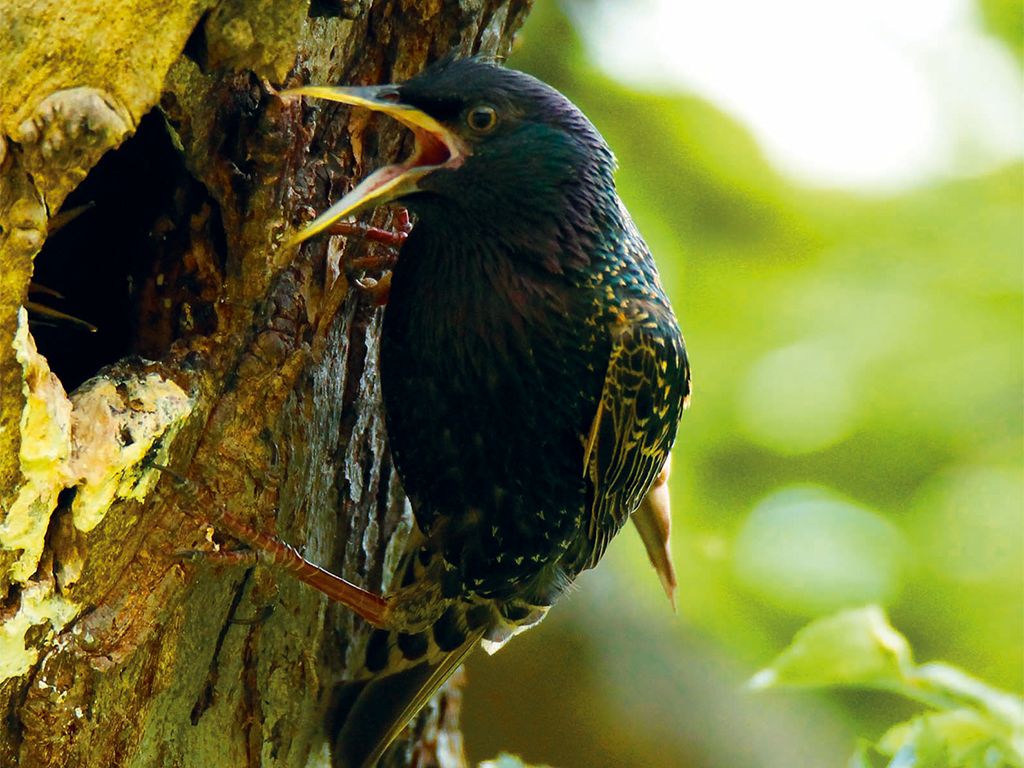 Biology
Biology


4678993 / 5565753
Starling
Bird of the Year
In general, male and female starlings look very much alike. In spring, starlings assume their nuptial plumage, in autumn, after moulting, they wear their eclipse plumage. The nuptial plumage of spring consists of black feathers that have a green, blue and violet metallic sheen. Females then have bright spots on the upper side of the feathers. Both sexes have a yellow bill with a light blue base for the males and a reddish one for the females. Details of this plumage can be recognised especially clearly in this starling in the NABU Bird Protection Centre in Mössingen. It has a bill injury which is being treated here before it is released again. The starling has a length of about 20 centimetres. It is between a parrow and a blackbird in size. It could be mistaken for a blackbird male at the most. But blackbirds have no shining plumage and, moreover, a longer tail. Its almost triangular wings are rather short compared with birds of a similar size. As short-distance or medium-distance migrants, starlings do not have to cover long distances. Their wings are broad since they mostly inhabit the open countryside. Compared to them, blackbirds have longer and narrower wings with which they can fly better in the dense forest. Starlings fly with rapid and strong wing beats. Gliding flight is used before landing.
Play trailer

Curriculum-centred and oriented towards educational standards
Matching
Copyright
Copyright is subject to constant change to keep up with technological advances. This film enables the viewer to grasp the basic principles of this extremely intricate matter. By way of introduction, the film defines what an author is, what kinds of works there are and how long a work is protected on principle. Then the fundamental rights of an author are cited and it is shown how these are exploited in our times. In the third chapter, the respective rights are illustrated by way of practice-oriented examples of books, photos, music and films. Here, of course, an emphasis is laid on the field of education, taking into account the latest case law within the EU and Austria in particular. A further chapter highlights the problems arising with the Internet and goes into the citation law and pirate copies. All in all, in this way the viewer is made familiar with the most important basic terms and their meanings. Comprehensive worksheets and additional accompanying material invite us to deepen our knowledge of the subject.









